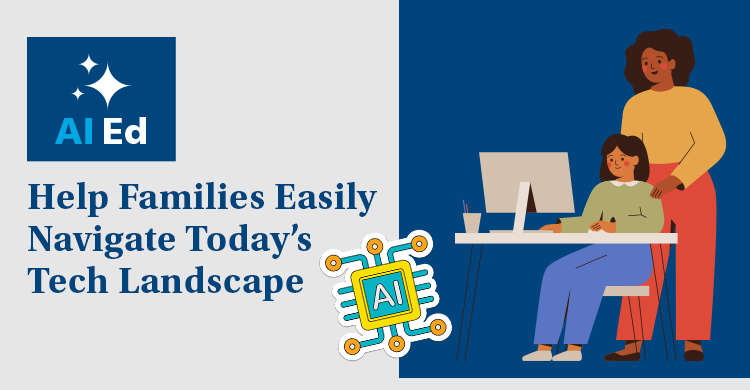Maybe you’ve heard the rumor that Elementary and Secondary School Emergency Relief (ESSER) funds have all been spent. In fact, most states still haven’t allocated all of their ESSER I funds. The numbers drop when you look at how many states have designated ESSER II and ESSER III funds, which have allocation deadlines of September 2023 and September 2024, respectively. The most time-sensitive federal funding right now, though, is ESSER I; the deadline to designate those dollars is September 30, 2022.
Two urgent questions asked by education leaders holding undesignated ESSER I funds are:
-
- How do we invest wisely to get the most for our money?
- What are our immediate next steps to make this happen?
Spending Focus and Trends
Let’s first look at the key areas of focus for federal stimulus funds, as named by the American Rescue Plan:
- Addressing learning loss/accelerating learning/closing opportunity gaps
- Social-emotional learning (SEL) and mental health
- Opening schools to in-person instruction
Those are the three broad categories that meet the intent of federal stimulus funding. National experts have found that roughly one quarter of ESSER spending has been dedicated to staffing-related expenses, one quarter has been spent on construction or renovation, and one half has been spent on academic recovery, which includes SEL and wellness in addition to proficiency in learning targets.
Digging deeper, six priorities come to light as the main drivers for district expenditures. These are:
- Comprehensive and holistic needs
- Academic resources and supports
- Improving infrastructure to advance equity
- Whole educator support
- Supports for special populations
- Actionable data insights
As state education agencies and districts search for investment opportunities, some truly promising conversations are unfolding. Rather than simply funding traditional practices that fall short of supporting student learning for all, education leaders are thinking about how to transform education and become more innovative. As US Secretary of Education Miguel Cardona said to education leaders, “I can tell you that the work you’re going to do in the next two years is gonna be transformational for our country. This is the closest to a reset we have.”
So, how can you use ESSER funds to do things not just differently but more effectively? Here are a couple of district leaders who have put federal stimulus dollars to work for lasting positive change.
Bartow County School System, Georgia
As superintendent of Bartow County School System near Atlanta, Phillip Page oversees 19 traditional schools and one college and career academy. Of these 19 traditional schools, 16 are Title I. Over the past three years, the district has worked to become a Model PLC at Work® district, which means their data show that they are implementing the Professional Learning Communities at Work process with fidelity to achieve sustained growth.
However, Bartow County Schools experienced disruption from the pandemic and, just like school systems everywhere, they took a hit. According to Page, the district saw a tremendous loss in reading competency among students, which informed their decision on where to focus ESSER funds. Acting as a professional learning community allowed leaders to engage in collective inquiry and collaborate as a guiding coalition to examine investment options and choose the right solution.
The second area of focus was to transform “summer school” into a targeted “summer intervention.” Because they work as a PLC, district staff have a shared knowledge of learning targets and essential standards. They were able to look at each student according to their essential standards, identify who needed extra support to become proficient in specific standards, and then target the learning rather than have students repeat an entire class. The students have motivation to succeed, because as soon as they show proficiency in learning targets, they are free to start their summer. The difference in engagement is substantial. Historically, Bartow County saw a 20 percent attendance rate for summer school. With the launch of “summer intervention,” the attendance rate soared to 80 percent. ESSER funds were used to staff summer intervention and provide transportation and meals.
Bartow County is able to sustain these initiatives by keeping that transformative, innovative mindset that Secretary Cardona challenges us to embrace. Again, working collaboratively, the guiding coalition and teams are analyzing which programs or processes are making an impact and which are not. By eliminating ineffective practices, the district is saving money and will be able to maintain their momentum when ESSER funds are gone.
Jefferson County Public Schools, Kentucky
Nate Meyer is the assistant superintendent of Jefferson County Public Schools in Louisville, Kentucky. He oversees 33 schools—all historically low achieving and high poverty.
“When we looked back at our scores, especially in the fall of 2019, and compared them with our MAP scores from fall 2021, our kids really did lose about a full year of learning because of COVID,” Meyer said. “Using ESSER funds appropriately to help close that achievement gap was absolutely paramount for the last year and obviously critically important moving forward.”
Jefferson County leaders took the funding as an opportunity to invest in teachers. They agreed it was important for everyone to develop a shared understanding of what a guaranteed and viable curriculum means—from the newest teacher to the senior veteran. So they prioritized professional learning around the collaborative team process, homing in on the four critical questions of a PLC:
- What do we want our students to know and be able to do?
- How will we know when they have learned it?
- How will we respond if they haven’t learned it?
- How will we respond if they already know it?
The district ensured each school had a PLC lead to work with staff in developing and sustaining high-functioning collaborative teams with a focus on all three tiers of instruction. So, looking at Tier 1 core instruction, the district used their resources to realign curriculum and expectations from elementary through high school. Funds were also used to train teachers in Tier 2 support, establish a Tier 3 program, and invest in technology that would make learning more equitable throughout the district.
Now Is the Time to Make History
One important thing to keep in mind is that we can do so much good with ESSER funding by using the money to really change the way we approach teaching and learning. For many schools, the daily practices and processes in place before the pandemic were not serving students. This is an unprecedented opportunity to take a hard look at what we’re currently doing, celebrate what works, and take the time to invest in improving or replacing what no longer supports our vision to achieve high levels of learning for all.
To learn more about ESSER funds, watch our webinar Sustaining ESSER Investments for Transformational Teaching and Learning.






